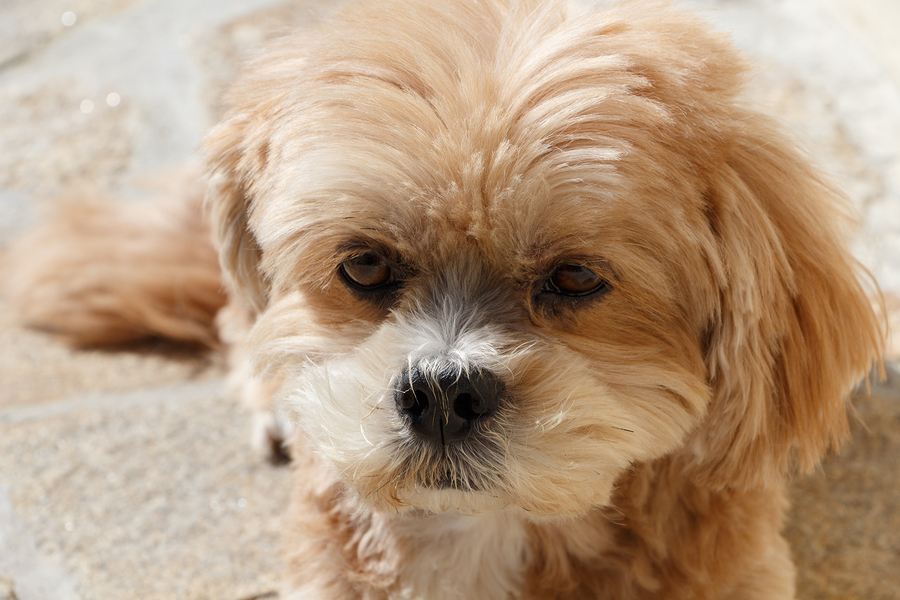Dogs find certain encounters so memorable that learning happens via a single experience — especially if it’s novel, intense, startling, or incredibly rewarding.
Sometimes it’s hilarious, as this headline from The Onion perfectly describes — “Dog Takes Pilgrimage to Holy Site Where It Once Found Rotisserie Chicken on Side of Road.”
Often, though, a single traumatic experience results in long-lasting concern, anxiety, or phobias.
Funny
- Looking under one particular bush after finding an entire turkey sandwich there once
- Checking a specific storm drain after seeing a rat dart in or out of it
- Standing watch under that one tree after a squirrel fell out of it like a gift from the tree gods
- Becoming an avid counter surfer after once snagging a snack goldmine there
- Letting himself and any canine pals into the backyard after managing to open the door without human help
Not funny
- Being nervous around kids after being handled roughly or hit by a child
- Feeling wary around a specific family member who once accidentally stepped on or tripped over the dog
- Refusing a specific food because it was once paired with a prescription medication that caused nausea
- Avoiding or treading carefully in a specific spot after once slipping or falling there
- Developing training challenges after hearing a sudden, loud noise while learning something new
Certified dog behavior consultant, Amy Cook, PhD, CDBC, CPDT-KA, explains, “We’re hardwired to learn quickly and modify our behavior quickly from things that could be a danger … If you’re going to learn from something happening one time, and it’s going to massively modify your behavior for all the times that comes up, that usually has to be a pretty dramatic event.”
Cook adds that dogs typically see such experiences in context. That’s why dogs often focus on the single location where an injury happened or why dogs who find food under a bush don’t check every patch of shrubbery.
Some dogs who are particularly vulnerable can develop generalized anxiety from a single negative experience. “This is why we want no dramatic things to happen to dogs because we cannot predict who is vulnerable,” Cook says.
Helping Dogs Recover
It’s tempting to battle the scary thing head to head. Cook warns, though, that you’re likely not going to change the dog’s emotional state in that moment when the dog is afraid.
Instead, get the dog out of the scary situation and make a plan to work on those concerns in a controlled setting, where you can dictate intensity so the scary thing feels smaller to the dog. For example, running the vacuum for a short time in another room with the door closed to muffle the sound.
After making the trigger small through low intensity and distance, use repetition and high-value food or toy rewards to teach new responses. One measly dog treat and one repetition aren’t enough.
Major caution. Our human response is to assume dogs will simply get used to something if we show them it isn’t scary. Cook says these exposures, especially when repeated without recognition of the dog’s actual response, can make things worse because the dog might learn the opposite of what you’re hoping to teach.
Preventing vigilance. Providing context and predictability prevents dogs from remaining vigilant. Cooperative care is a good example. We can prepare dogs for required tasks and handling by keeping intensity and arousal low and giving dogs time. Cook says teaching cooperative care takes away some of the novelty, which is protective over time.
Cooperation and consent are sometimes impossible to grant, especially in veterinary situations that may be painful. But if dogs understand this is one of those situations, that’s okay too.
“Information is the enemy of vigilance,” Cook says. “If you know when it’s coming, you don’t have to be ready for it constantly. If you can be told this is what is going to happen, then you’ll just get ready right before it happens, rather than staying ready all the time.”
Creating Positive Moments
With planning, you can create positive memorable moments. In the “Calling All Dogs” online course through Fenzi Dog Sports Academy, Chrissi Schranz teaches ways to reward dogs for checking in with you, staying within a certain perimeter, and coming straight to you when asked. In one exercise, she recommends planting surprise food jackpots before off-leash training. Essentially, you hang hot dogs in a tree along the training route, then you make a big deal about finding it and letting your dog eat it all. This setup encourages dogs to stick closer to you while off leash because you sometimes find trees full of food.
Such training, however, requires repetition. One hot dog tree is probably not enough to create life-long learning. Over time, the goal is to teach dogs that you’re worth their time and attention, even in distracting environments.
“It’s pretty difficult to have really positive things make that kind of impact,” Cook explains, “because it doesn’t confer physical safety in the same immediate way for us to remember what made us happy. It doesn’t mean that there is no memory for them, and it doesn’t mean that you can’t make a good, strong, positive impact by using a big, amazing thing. It’s just not quite as likely to have an impact of the same magnitude, nor nearly as quickly [as a negative experience].”
This article was reviewed/edited by board-certified veterinary behaviorist Dr. Kenneth Martin and/or veterinary technician specialist in behavior Debbie Martin, LVT.
Roxanne Hawn began writing about veterinary and pet topics 25 years ago. She is the author of Amazon best-seller Heart Dog: Surviving the Loss of Your Canine Soul Mate and the award-winning site ChampionOfMyHeart.com.








